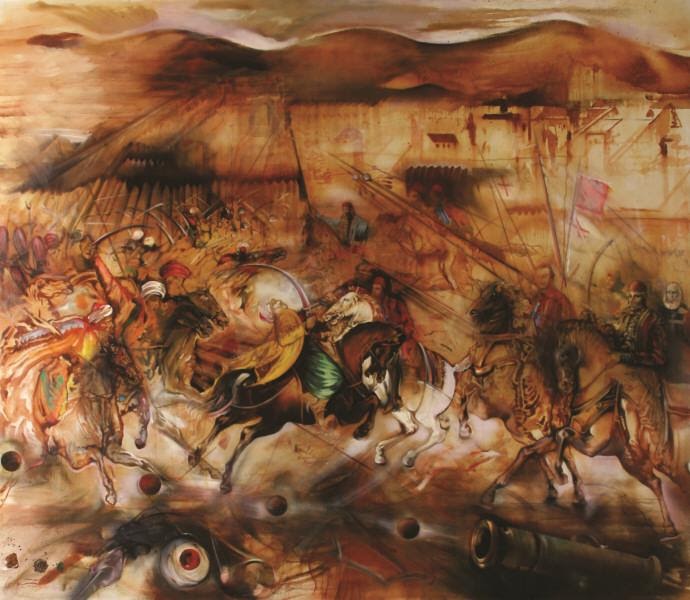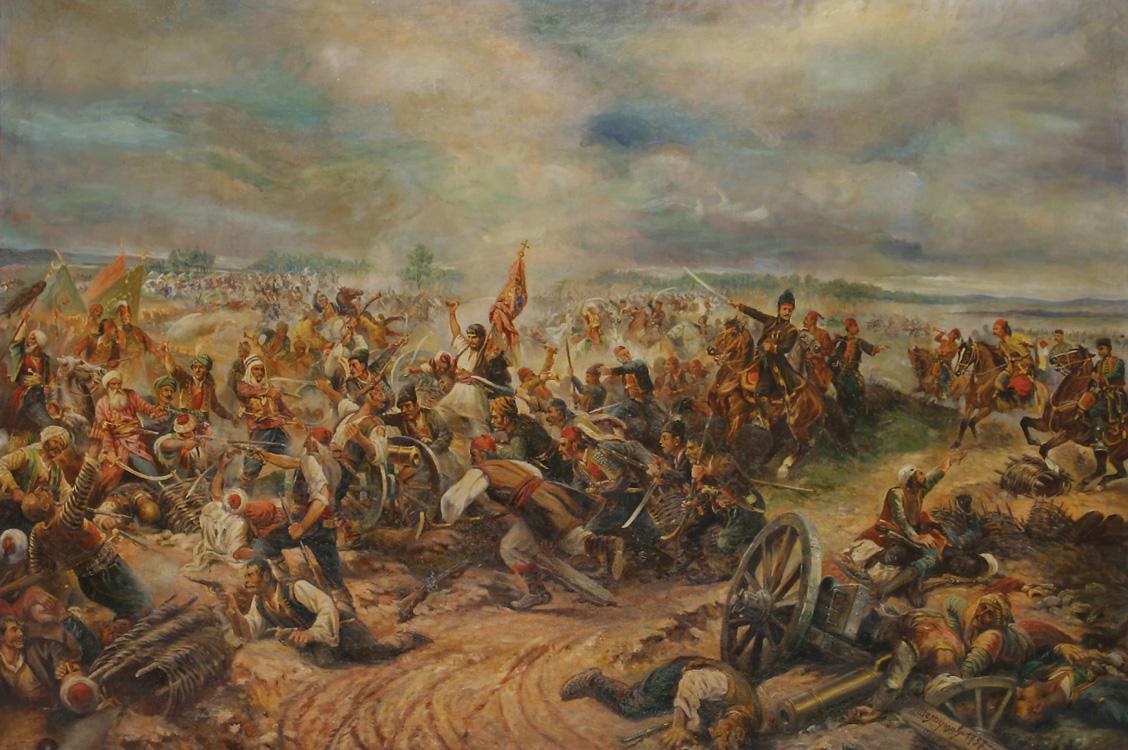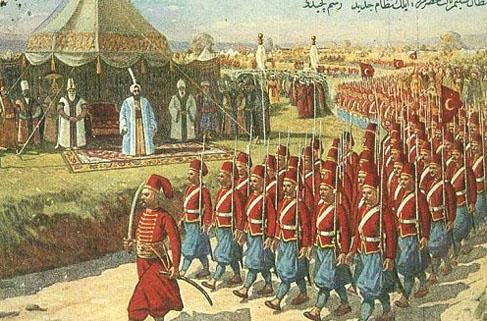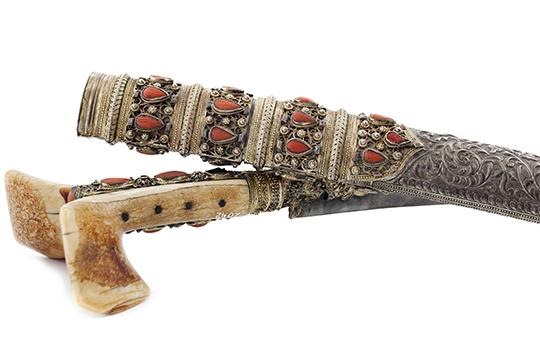

Table of Contents
The Serbian revolution was a long and complex historical process, undertaken by the oppressed Christian serfs (Raja) of the Ottoman Empire, intending to obtain rights of social dignity, national recognition and political autonomy at the beginning of the 19th century. As a rebellion of a disenfranchised group of society with a clear aim for acquiring national statehood, it inspired revolutions of other Christian peoples of the Turkish Empire, Greeks and Romanians before all. This major endeavor of Serbian history lasted for almost three decades and featured different methods of fighting. Therefore, some historians claim the Era of the Diplomatic Struggle (1815-1830) as a more fruitful period of the revolution than the previously fought uprisings (1804-1815). Although this might be an interesting point, the role of the armed efforts of Serbian insurgents in opening the door for diplomatic negotiations with the Sultan and Muslim nobility remains indisputable. In the following lines, we will see how the famous battles of the two Serbian uprisings created the ground for the ensuing political negotiations with the Turks.

The flag of the Serbian regular troops from the First Uprising (1809), Historical Museum of Serbia.
The Revolution begins
The stakes are raising
It could have been just another revolt of dissatisfied serfs against the oppression of the local landlords of the Belgrade Pashalik. All the more so, these landlords were members of the old military order of janissaries that had already been repudiated by the Sultan. However, two simple facts changed the course of the following events. First of all, after victories against the local Muslim feudal lords in the first year of the rebellion (1804), Serbs have become more confident and their demands more comprehensive. Most important of all, they wanted to be admitted as equals to the Turks by initiating direct negotiations with the central government (Porte) about their future rights and privileges. Exactly that demand laid the second major reason for the escalation of the Serbian uprising to the extent of the full-scale national revolution. For the old-fashioned members of the Ottoman government, immersed in the words of Sharia (old Muslim religious laws), any kind of negotiations with their subjects-infidels was out of the question.
Serbian Rubicon
An open confrontation seemed unavoidable. Serbian demands were easily refused and their deputies imprisoned in Istanbul. Instead of negotiations, an army of 20.000 soldiers, well-trained and heavily armed, was deployed to Serbia in summer 1805 with an aim to punish disobedient Serbs. Their leader Hafiz-pasha particularly stood out in disdain towards the opponents. As famous historian Leopold Ranke recorded, he ordered his soldiers to take enough ropes for the captives and enough razors and peasant hats for the leaders of the insurgents to replace their swords and officer caps.
However, this turned out to be a difficult task. Although with the lack of heavy arms and ammunition, Serbian fighters have raised self-confidence in the previous battles against the local janissaries and their war experience has become significant. More importantly, they were left without choice – pray for mercy or fight to the last! The Turkish troops were approaching Morava River near the town of Paraćin and the decision had to be made! At the nearest field of Ivankovac, 2.500 insurgents finally resisted the Turkish charge. After a few hours, they lost one of the trenches but held the other one until the night. Serbian toughness came as a surprise for the Turks. Exhausted and decimated, they couldn’t do more for a day. The next morning they were jolted by the news of Serbian defense being reinforced by 5.000 soldiers led by the very leader of the Uprising, Karađorđe Petrović. Hafiz-pasha didn’t dare to attack again. He retreated to Paraćin and then further south to Niš. The famous legend claimed that he died of shame. Be as it may, the Sultan’s army was utterly dishonored and the news of defeat provoked disbelief and fury among the members of the Porte.
On the other side, Serbian insurgents were celebrating but their leaders were aware of what this victory meant – the Rubicon was crossed! From that point on, the Revolution has started! This wasn’t a fight against the local nobility anymore but against the entire Empire. Therefore, a new goal had to be established. A struggle for civil rights has turned into The war for the Restoration of the Serbian State!.
1806 – A year that shook the Empire
Preparations for the Holy War
Defeat at Ivankovac caused dismay in Istanbul. From Porte’s point of view, the prestige of the Ottoman army was severely challenged. Therefore, revenge had to be served as soon as possible. That moment came in early 1806 when the Holy war against the infidels (Jihad) was declared and a very commander-in-chief of the Turkish army, Ibrahim-pasha was ordered to suppress the revolt energetically. Around 75.000 elite Ottoman soldiers were made available for this operation, attacking Serbia from three different sides. For many centuries, this would have been more than enough to discourage the enemy from any resistance. But the times have changed.

Olja Ivanjicki, The Battle of Ivankovac, Oil on Canvas, 1989, Historical Museum of Serbia.
After the battle of Ivankovac, Serbs have conquered a symbolically important town of Smederevo, the last capital of the medieval Serbian state where they have organized an assembly, solemnly declaring the will to defend legacies of the previous victories. Specific goals of the insurgents were also proclaimed – to popularize the armed struggle among the Serbs who were still under Ottoman rule, to attract the attention of Christian Empires of Europe and to force the Porte to commence negotiations on equal terms. Being informed about the Turkish preparations, they decided to offer defense on all possible fronts.
The battle of Mišar
The first major battle took place in Northwestern Serbia in August 1806, on the Mišar field when less than 10.000 Serbian fighters defeated a huge army of Bosnian Muslim nobility cheered by the sounds of drums and trumpets (zurle). Although heavily outnumbered, the Serbs have vanquished their enemy thanks to the strategic genius of their leader, Karađorđe. Following his plan, the Turks had been lured towards Serbian trenches until the moment when Serbian cavalry of 2.000 men, previously hidden in the wood, attacked their flank and rear. The Turkish ranks disbanded and the battle was soon over. Bosnian noblemen have suffered one of the heaviest military blows in their history and their flags have been captured by the insurgents. Once again, the glorious imperial troops have been ashamed by the hands of infidels.

Afanasij Scheloumoff, The Battle of Mišar, Oil on Canvas, 1937
The battle of Deligrad
While the battle of Mišar was going on, on the southeastern front the Turkish troops from Pashalik of Rumelia were penetrating Serbian territory along the old Roman road, Via Militaris. Finally, they ran up to Deligrad, the biggest Serbian stronghold in the southern frontier, specifically designed to disable the advance of the enemy towards the capital of the Pashalik, Belgrade. Under the command of well-experienced officer Shashit-Pasha, Turkish soldiers inflicted significant blows to the insurgents, especially after one of their leaders, Milenko Stojković left with his soldiers to stop another Turkish advance in Eastern Serbia.

Nizami-cedid, Regular troops of Ibrahim-pasha preparing for the attack on Serbia in 1806, Wikipedia
However, the rest of the Serbian defense stood firm and some insurgents even carried out maneuvers on the Turkish rear. Finally, the fortunes turned after the arrival of Karađorđe together with the victorious army from the field of Mišar. Soon afterward, the Turkish charge halted in Eastern Serbia as well, which meant that the Ottoman army was defeated on every section of the front. Hence, by late September 1806, Ibrahim-pasha was forced to stop the operations, implicitly admitting the failure.
The Revolution at its Peak
Belgrade in Serbian hands
Magnificent victories against the Ottoman armies encouraged the Serbian revolutionaries to make another brave move – to besiege Belgrade, the seat of the former Pashalik. For centuries, the old fortress of Belgrade represented one of the most famous places of the Ottoman Empire. Conquered by the Sultan Suleiman the Magnificent in the 16th century, it was the bordering city of the Empire, incessantly contested between the Christian Austrians and Muslim Ottomans who conveniently called it The House of Holy Wars (Dar-ul-Jihad).
In late 1806 it was once again surrounded and besieged by the Infidels. This time not by the troops of the Austrian Empire but by former Christian slaves and serfs – What an astonishment this provoked among the European diplomats and press. In late December, the gates of Belgrade’s town were taken by surprise in the early morning after which the entire urban area was raided by the Serbian troops. At one of the town’s gates (Stambol kapija), one of the most prominent Serbian officers (voivode) from the Belgrade’s area, Vasa Čarapić has lost his life. A few weeks later, after combined actions of bombing and negotiations, the Turkish garrison surrendered and the fortress of Belgrade was in Serbian hands right at the time of the celebration of the Orthodox Christmas, in January 1807. After many salvages and battles, the Uprising was at its peak – the Revolution has reached its brightest point.
The War goes on
Stunned by the loss of the most important fortress on the Empire’s northern border, Sultan Selim III and the Porte finally decided to change the strategy. Peace negotiations have eventually become the only choice for the Ottomans, especially after the insurgents seized Šabac and Užice, the last remaining bastions of the Turkish authority in Serbia. Former subjects were to be respected as an equal party in these negotiations, regardless of the consternation that provoked the Porte. However, Turkish intentions soon proved dishonest. They have started negotiations with the Serbian representative Petar Ičko, promising every possible privilege, but boldly denying to sign anything formally. Clearly, they only wanted time to console their military ranks, never truly abandoning the idea to defeat and punish the Serbs.
On the other side, the victorious insurgents didn’t want anything less than a document, internationally recognized and signed by the Sultan, that would grant them full social equality and political autonomy on the entire liberated territory. Given that such a document wasn’t coming, their ambitions were getting bigger. Some of them even called for independence and territorial expansion. After all, over the years they have attracted sympathies of the Serbs and other Christians of Turkey. More importantly, they have eventually gained open support from the Russian Empire. A peace treaty seemed more and more distant. When the Russians finally declared war on Turkey, the insurgents ceased negotiations. The war continued! As one of the Serbian officers pointed out in March of 1807 – Serbia considers itself an independent state! It won’t be paying any tributes nor raising the weapons against the Orthodox brothers!

Karađorđe’s yataghan (a sword without a guard and with double-curved blade, used in Muslim countries), 1810-1811, Historical Museum of Serbia
In this way, the Serbian insurgents have defeated armies of the Ottoman Empire, liberated their country and proclaimed independence from the Sultan. With Russians by their side, the new challenges were awaiting. A new revolutionary goal has been pronounced – the liberation of all the Serbs of the Turkish Empire, wherever they lived! A standing army was to be organized and the first political and judicial institutions to be established. Serbian statehood had to be consolidated and the legacy of armed struggles to be defended in the years to come.
